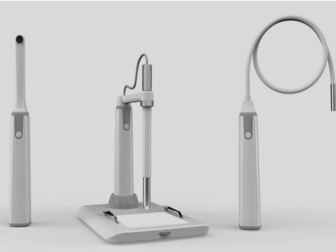Tag - Smart Endoscope
Cases, Typical , May 23, 2023 , internet of things, IoT Cases, Smart Endoscope, Smart Medical
The Revolutionary Smart Endoscope: Transforming Diagnostic Medicine with Cutting-Edge Technology
The Revolutionary Smart Endoscope: Transforming Diagnostic Medicine with Cutting-Edge Technology
The advent of smart technology has revolutionized numerous fields, and diagnostic medicine is no exception. The smart endoscope is at the forefront of this transformation, offering a sophisticated blend of traditional endoscopic techniques with advanced features such as enhanced imaging, data integration, and artificial intelligence. This innovative tool is not just an incremental improvement; it is a game-changer in the way healthcare professionals diagnose and treat various conditions.
Traditional endoscopes are instruments used to view the interior of a hollow organ or body cavity. While they have been invaluable in medical diagnostics, their capabilities were limited to what the human eye could see through the scope. The smart endoscope, on the other hand, goes several steps further by incorporating high-definition cameras, sensors, and connectivity that significantly improve the clarity and detail of the images captured.
One of the most significant advantages of smart endoscopes is their ability to use enhanced imaging techniques like narrow band imaging (NBI) and confocal laser endomicroscopy (CLE). NBI enhances the visualization of blood vessels and mucosal structures without the need for dyes or external agents, while CLE allows for real-time microscopic analysis of tissues. These methods can lead to earlier and more accurate detection of abnormalities such as cancerous growths or pre-cancerous lesions.
Integration with electronic health records (EHR) is another feature that sets smart endoscopes apart. With EHR connectivity, patient data can be accessed and updated in real time during endoscopic procedures. This seamless integration ensures that all relevant patient information is at the healthcare provider’s fingertips, allowing for more informed decision-making and enhanced patient care.
Artificial intelligence (AI) is perhaps the most ground-breaking aspect of smart endoscope technology. AI algorithms can assist doctors in real-time during procedures by providing decision support, highlighting areas of interest, and even predicting the likelihood of certain diseases based on visual patterns. This can significantly reduce the chances of human error and improve diagnostic accuracy. As machine learning models are continually fed more data, their predictive capabilities will only become more refined.
An additional benefit of smart endoscopes is their potential to improve educational outcomes for medical students and trainees. The high-quality images and videos captured can be used for teaching and can be easily shared for remote consultations or second opinions. This not only enhances the learning experience but also promotes a collaborative approach to patient care.
While the smart endoscope represents a major leap forward in medical diagnostics, there are challenges to widespread adoption. The cost of these advanced devices can be prohibitive for some healthcare facilities, particularly in under-resourced areas. Additionally, there is a learning curve associated with the new technology, and medical professionals must be adequately trained to utilize its full potential. Data privacy and cybersecurity are also concerns, as with any device that is connected to the internet and patient databases.
In conclusion, the smart endoscope is reshaping the landscape of diagnostic medicine by providing an unprecedented level of detail and accuracy in medical imaging. Its integration with AI, EHR systems, and enhanced imaging technologies not only improves patient outcomes but also paves the way for more personalized and efficient healthcare. As the technology becomes more accessible and healthcare providers become more adept at using it, the smart endoscope is poised to become an indispensable tool in clinics and hospitals around the world.
